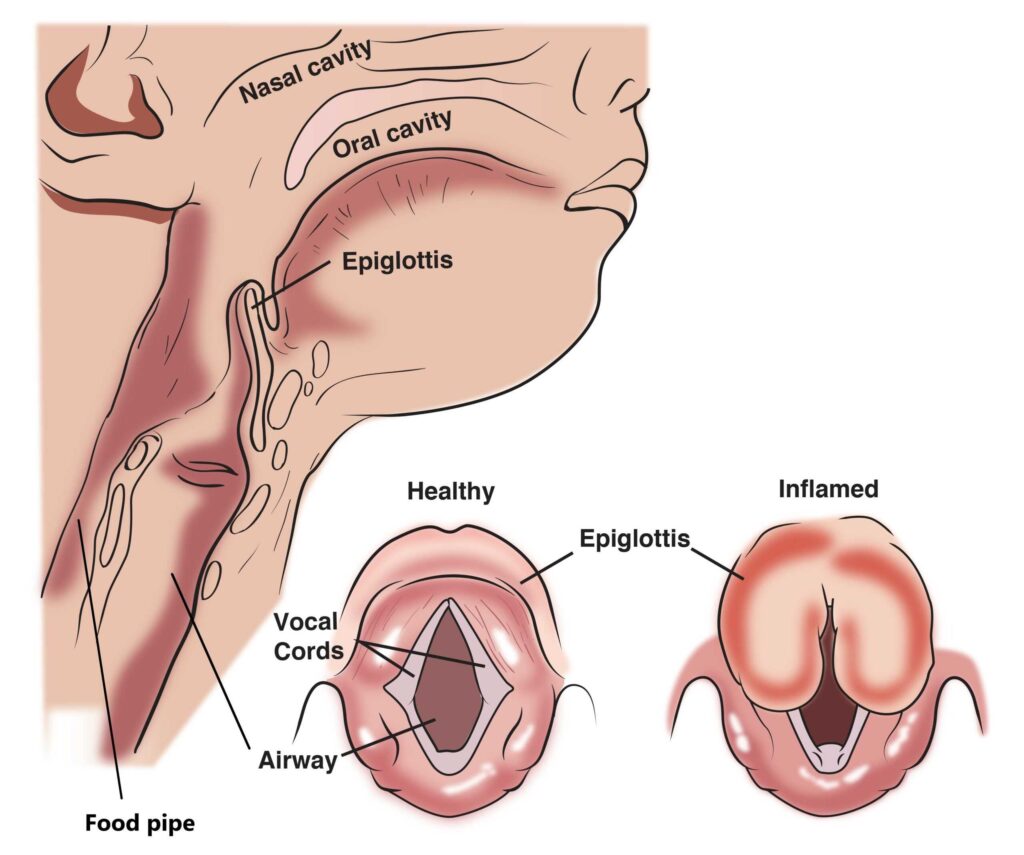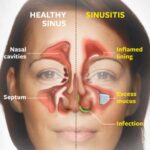Acute epiglottitis is a potentially life-threatening condition characterized by inflammation of the epiglottis, a flap of tissue located at the base of the tongue. The epiglottis plays a critical role in preventing food and liquid from entering the windpipe during swallowing. When inflamed, it can obstruct the airway, leading to respiratory distress. Prompt recognition and treatment are essential for patient safety.

Causes of Acute Epiglottitis
The condition is commonly caused by bacterial infections, with Haemophilus influenzae type b (Hib) being the leading pathogen, particularly in unvaccinated individuals. Other bacterial culprits include:
- Streptococcus pneumoniae
- Group A Streptococcus
- Staphylococcus aureus
Non-infectious causes such as thermal injuries (e.g., burns from hot liquids) and trauma to the throat can also lead to epiglottitis.
Recognizing Symptoms of Acute Epiglottitis
Symptoms of acute epiglottitis often develop rapidly and may include:
- Severe sore throat
- Difficulty swallowing (dysphagia)
- Drooling
- Stridor (a high-pitched wheezing sound during breathing)
- Fever
- Hoarseness or loss of voice (dysphonia)
- Respiratory distress
In severe cases, cyanosis (bluish discoloration of the skin) and tripod posture (leaning forward with hands on knees) may be observed.
Diagnosing Acute Epiglottitis
Clinical Examination
Diagnosis begins with a thorough clinical evaluation. Healthcare providers must avoid throat examination with a tongue depressor if epiglottitis is suspected, as this can worsen airway obstruction.
Imaging and Tests
- Lateral Neck X-ray: Shows the characteristic “thumbprint sign” caused by an enlarged epiglottis.
- Flexible Fiberoptic Laryngoscopy: Enables visualization of the inflamed epiglottis under controlled conditions.
- Blood Cultures and Throat Swabs: Identify the causative organism.
Emergency Management and Treatment
Airway Management
Securing the airway is the top priority in acute epiglottitis. This may involve:
- Endotracheal intubation under controlled settings.
- Tracheostomy in cases where intubation is not feasible.
Pharmacological Treatment
- Antibiotics: Broad-spectrum antibiotics such as ceftriaxone or cefotaxime are administered to combat bacterial infections.
- Corticosteroids: Reduce inflammation and swelling of the epiglottis.
Supportive Care
Patients require close monitoring in an intensive care unit (ICU) for oxygen therapy and fluid management.
Prevention of Acute Epiglottitis
Hib Vaccination
Vaccination against Haemophilus influenzae type b (Hib) is the most effective preventive measure. Routine immunization in children has significantly reduced the incidence of epiglottitis in many countries.
Hygiene Practices
Promoting good hygiene, such as regular handwashing and avoiding contact with infected individuals, helps prevent the spread of causative bacteria.
Prognosis and Complications
With timely treatment, the prognosis for acute epiglottitis is excellent. However, delayed intervention can result in complications, including:
- Acute airway obstruction
- Respiratory failure
- Secondary infections such as pneumonia
Acute epiglottitis is a medical emergency requiring swift diagnosis and intervention. By recognizing its symptoms and understanding its causes, healthcare professionals can ensure effective management and improve patient outcomes. Widespread Hib vaccination remains crucial in reducing the global burden of this condition.

